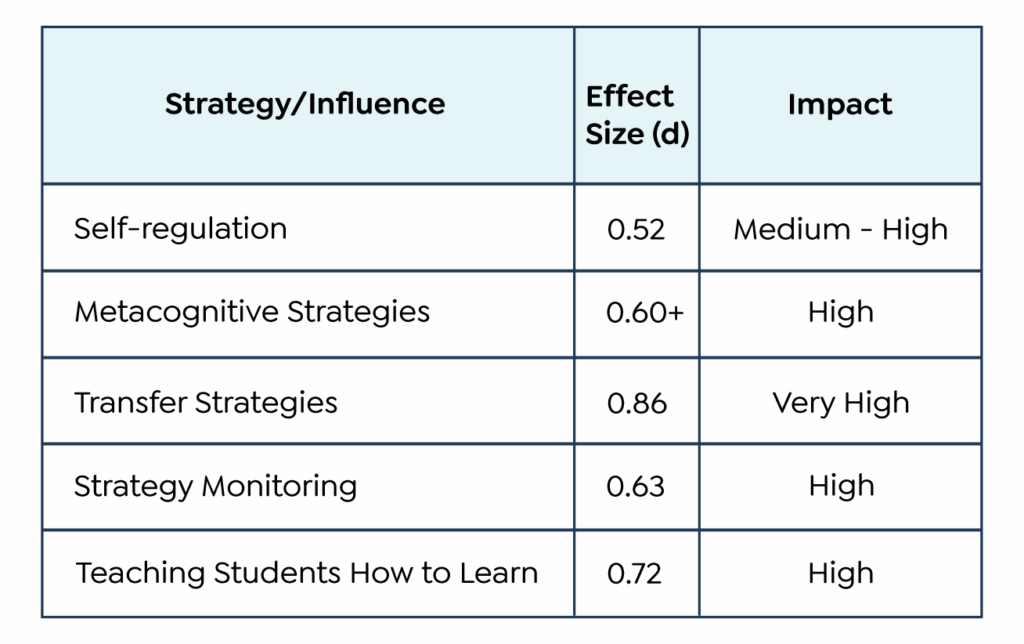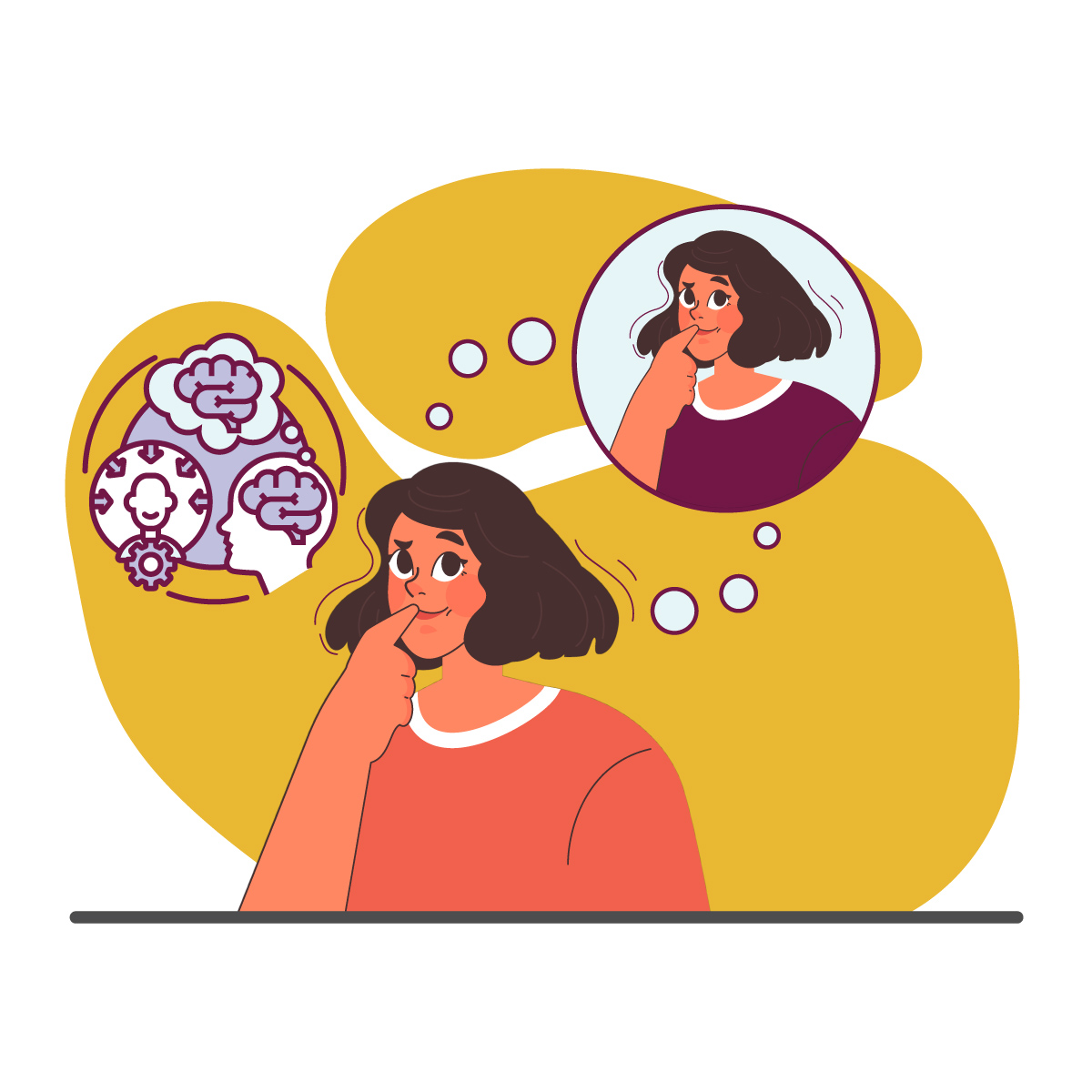Imagine this: A student uses a conflict resolution strategy from a community circle during a group science project. Another applies a reading comprehension technique to a social studies article. These aren’t just examples of good learning—they’re evidence of transfer. And when students begin to transfer strategies across subjects and settings, something powerful happens: they become metacognitive. They become agents of their own learning.
According to John Hattie, transfer strategies boast an effect size of 0.86—a signal that they’re among the most effective tools for deep learning. But the real magic happens when these strategies are wrapped in metacognitive clarity.
Transfer strategies are metacognitive tools that help learners apply what they’ve learned in one context to another. According to John Hattie’s meta-analyses, transfer strategies significantly support both self-regulation and metacognition, and contribute to deep and transfer learning.
What Are Transfer Strategies?
Transfer strategies are instructional tools and learner habits that help students:
- Recognize patterns across learning contexts
- Apply previously learned skills, strategies, or knowledge to new tasks
- Adjust and evaluate their learning based on task demands
Examples include:
- Using a reading comprehension strategy from fiction when analyzing informational texts
- Applying mathematical problem-solving routines to science experiments
- Transferring collaborative skills from group work to peer feedback sessions

Hattie’s Research on Transfer, Metacognition, and Self-Regulation
From Hattie’s Visible Learning (2009, updated 2012, 2023), effect sizes related to this topic:

Hattie (2023) emphasizes that transfer is the hallmark of deep learning and cannot happen without metacognitive engagement.
How Transfer Strategies Build Metacognition
Transfer requires students to:
- Plan: Select and adapt strategies for new challenges.
- Monitor: Identify when a strategy is useful in a new context.
- Evaluate: Determine how well it worked and why.
This aligns with Flavell’s model of metacognition (knowledge of cognition + regulation of cognition) and Zimmerman’s cycle of self-regulated learning (forethought, performance, self-reflection).
How Transfer Strategies Promote Self-Regulation
- Goal Orientation: Students recognize learning intentions and transfer them to novel goals.
- Strategy Use: Students choose from a repertoire of strategies they’ve used successfully before.
- Feedback Loops: Learners analyze outcomes and adjust strategies—key to the reflection phase in self-regulated learning.
Example in Practice
A student learns a 5-step problem-solving strategy in math:
- Understand the problem
- Plan a solution
- Execute
- Check
- Reflect
When writing an argumentative essay, the student transfers this:
- Understand the prompt
- Plan the structure
- Write
- Revise
- Reflect
By doing this, the student activates planning, monitoring, and evaluating skills, becoming both a metacognitive and self-regulated learner.
Metacognitive Clarity: The Engine of Transfer
Transfer isn’t just about applying content. It’s about applying thinking. It’s about helping students answer the questions:
- What was my goal or challenge?
- What strategy do I need here?
- How well is it working?
- What can I adapt or do next time?
That’s why we’re thrilled to share that our upcoming book, Metacognitive Clarity: Think Rigorously. Advance Democracy, co-authored by me and Isaac Wells, is launching this fall with Mimi & Todd Press. In it, we explore how metacognitive clarity is the bridge between strategy use and self-directed learning. When students understand how they learn, they begin to make intentional, courageous choices about what they learn and why it matters.
Impact Teams: A Framework for Action
In the spirit of democracy and collective efficacy, the Impact Team PLC model creates the ideal structure to nurture transfer and metacognition since our mission is to advance learner agency. Through cycles of evidence, analysis, and action, teacher teams (PLCs) —and students—develop the tools to:
- Co-construct learning intentions and success criteria
- Reflect on which strategies lead to success
- Apply feedback and adjust their approach across disciplines
- Set goals, track progress, and deepen ownership of learning
In an Impact Team, transfer is not a coincidence—it’s a design principle. Students don’t just complete learning. They own it. And that ownership is the foundation of learner agency.
How am I designing learning so that students don’t just use strategies, but own them?
The Future Is Learner-Centered
If we want to build schools where learners are active, engaged, and empowered—where democracy is practiced every day—then transfer strategies and metacognitive clarity must be at the heart of our instruction.
- When students learn to transfer, they learn to lead.
- When students think metacognitively, they become agents of their future.
- When schools adopt Impact Teams, we build a system for equity through agency.
We can’t wait to share more with you in the fall when Metacognitive Clarity hits the shelves. In the meantime, ask yourself:
How am I designing learning so that students don’t just use strategies, but own them?



